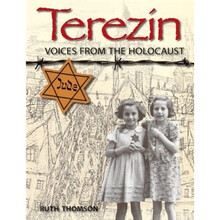Terezin:Voices from the Holocaust簡介,目錄書摘

Even libraries with substantial Holocaust collections will want this generously sized, illustrated account that blends the searing history of the Terezin concentration camp with personal testimonies of those who were there, artwork of both established painters and children, and quotes from survivors.oral histories and secret diary entries, including a Czech schoolboys memories of how life changed for the Jews when Hitler came. The statistics sum it up: 15,000 children passed through Terezin; fewer than 100 survived. Also part of the story are the astounding lies and cover-ups (including the transportations of orphans and the dying to Auschwitz to cut down on overcrowding) that tricked official observers into issuing a positive report.
Two years after the Nazi invasion of Czechoslovakia, the small fortress village of Terezin was converted into a Jewish ghetto, and over the next four years, tens of thousands of Jews were transported there while in transit to death camps in the east. The history of Terezin is fascinating: the camp housed many noted artists who were forced to create Nazi propaganda and official documents by day and then covertly chronicled the horrific experience of living in Terezin in their own compositions at night. Much of the art created at Terezin survived the Holocaust, and a generous sampling is included in this volume. Thomson opts to tell the story of Terezin almost entirely in the voices of those who lived there; a magazine-style layout combines her occasional introductory commentary with abundant quotations and clearly captioned art and images of memorabilia. The book is organized both chronologically, beginning with a brief overview of Hitler and the Jews and ending with the liberation of Terezin, and topically, including chapters on such subjects as the role of children, the effect of transports on the community, and how arts and culture helped residents of Terezin to survive.







 京公網(wǎng)安備 11000002000088號
京公網(wǎng)安備 11000002000088號